2022 Week 7: Family Wellness
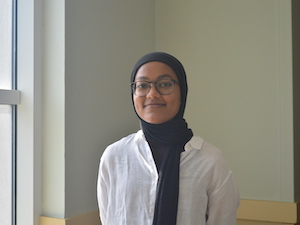 Fatima Elzamzami | Franciscan Center
Fatima Elzamzami | Franciscan Center
These past two weeks I have had the opportunity to visit detox facilities, shelters, and homeless encampments across Baltimore with the Franciscan Center’s Outreach team. The goal of our outreach services is to reach clients who may otherwise be inaccessible to the Center due to barriers such as transportation and physical and mental well-being.
On Fridays, The Franciscan Center’s outreach coordinator and her team visit a set list of homeless encampments across Baltimore City to provide resources and support. One of the encampments we visit is Potee, one of the largest homeless encampments in Baltimore City. It is located in South Baltimore, in a secluded forest area behind a gas station. Around 50 people live there in various tents scattered along the forest grounds.
As we walked around the encampment on my first day there, I could not help but reflect on how difficult it would be to live there. At Potee, people experience constant exposure to the elements, no access to running water or electricity, no sanitation services, etc. I naively asked my supervisor if the people living there for extended periods of time were aware of the shelter and housing resources available in the City, and my supervisor informed by that there were likely aware of the resources (the Franciscan Center even holds a monthly resource fair there), but not everyone wants to utilize them. This confused me greatly at first, especially after seeing the living conditions there, but after talking to my co-workers and supervisors, I learned more about how the reasons for staying at these encampments are incredibly multi-faceted and complex.
There is a great social stigma against homelessness, often resulting in violence towards people experiencing homelessness. Living in encampments like Potee can provide some security, as well as much-needed social support and community. I noticed the sense of community when I first stepped foot into Potee, where we were greeted with a small community garden and a tiny house with multiple chairs and a grill on its outside. In fact, on my first day there we only talked to one person since everyone was out looking for one of the community member’s missing dogs. Community is just one of the reasons why some of my stay at Potee and encampments like it, however, other reasons include substance use, shortcomings of the shelter system, and a sense of autonomy/privacy. Homelessness is a social issue that inherently intersects with all social issues, since people are forced into homelessness due to various shortcomings within our system, including a lack of access to affordable housing, jobs that pay a living wage, high medical bills that force people into poverty, et cetera. Visiting Potee has truly allowed me to reflect on this intersectionality and how various factors play into why someone may stay at an encampment.
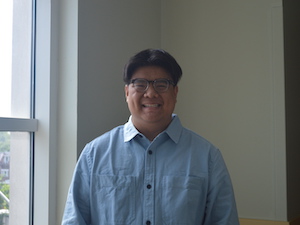 Kobi Khong | Rebuild, Overcome, and Rise (ROAR) Center
Kobi Khong | Rebuild, Overcome, and Rise (ROAR) Center
Intersectionality is one of the most important things when we talk about the issues of crime, this is especially relevant in the frame of our city of Baltimore. Too often when we talk about issues they’re viewed through a single issue and single solution lens; with an increase of crime, people assume that the only way to fix the problem is to increase policing, but in reality there are a multitude of other more impactful factors that affect a person’s likelihood of being victimized or committing a crime. We at ROAR help contribute to one of these factors that intersect with our victim services, the majority of individuals who commit crime, they themselves were previously victims of crime. After surviving a crime, people are in vulnerable positions and without resources that can help them in securing their goals of security some people may be forced into positions to continue the cycle.
At Rebuild, Overcome, and Rise, intersectionality is also at the core of our work, when survivors of crime are affected, resources cannot solely fit into one category, they must also be reflective of the multifaceted traumas that are experienced in the aftermath of a crime. ROAR offers legal services in court, but also offers supportive services in the forms of case management, therapists/counselors, and our nurse managers. Most of the fellow placement areas at the Community Impact Internship Program intersect with our work. Education for youth is one of the best preventative measures to keep people out of the prison-industrial complex, without food access and a safe environment or proper health care people do not have the resources to survive. At ROAR, we also support in ways such as through housing assistance, as being unhoused is also a risk factor that is not usually considered connected to crime. This summer as a community engagement intern, I personally have seen how vital neighborhood improvement and community organizing is to increase the wellness of entire populations of people, which in turn lowers the density of crime in these communities.
Throughout this summer discovering collaborative opportunities between my organizations and others has been a really insightful part of my work experience, pairing with other community based organizations such as the 29th Street Community Center, or the Central Baltimore Partnership, or even the Mayor’s Office of Neighborhood Safety and Engagement is a really key aspect in supporting our city.
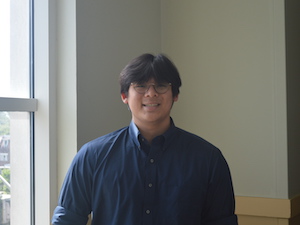 Jonathan Lee | Court Appointed Special Advocates (CASA) for Children of Baltimore
Jonathan Lee | Court Appointed Special Advocates (CASA) for Children of Baltimore
After 8 weeks of orientation and working at CASA of Baltimore, it’s crazy to think that we’re going into our last week of CIIP. This summer has not only taught me a lot about what it’s like to work with a non-profit, but also how to commute around Baltimore, present myself in a court hearing, and dabble in graphic design. While I came into this summer with a lot of “what ifs”, I feel like I’m leaving with a lot of clarity and confidence in how I see non-profit work affecting my future endeavors.
As an aspiring physician, understanding the intricacies of government welfare and connecting patients to social services is an essential part of providing holistic care. From an outside perspective, it’s incredibly easy to assume that someone’s low-income because they make poor financial decisions. This, however, ignores unjust aspects of our society such as the cost of prescription medications, low wages, and inflation. In addition to providing a well thought out treatment plan from a medical standpoint, it’s just as important to ensure that it’s feasible for the patient. In the past couple days, I’ve been reading a lot about differences in health outcomes for patients on Medicare vs Private Insurance when undergoing orthopedic procedures. In the studies I’ve been reading, the common trend is that patients on Medicare have higher rates of complication, readmission, and mortality. Disparities like these really highlight how social determinants of health play a role in medicine.
Going into my last week, I want to savor the opportunities that have been afforded to me through CIIP and CASA. The lessons I’ve learned about Baltimore have allowed me to feel closer and more comfortable with the city. The amount of history and beauty that Baltimore holds makes me want to continue learning in the short amount of time I have left at Hopkins.
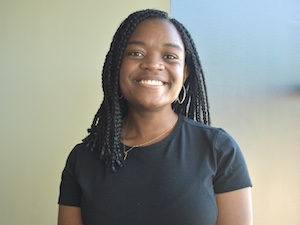 Koye Oputa | BCPS Special Education
Koye Oputa | BCPS Special Education
“Child” is an identity that often goes unacknowledged in discussions on intersectionality.
To be a child is often to be disadvantaged when surrounded by adults who believe one or
more of the following:
(1) To give a child respect is asking an adult to entertain disrespect.
(2) If a child fails to do something correctly, it is a result of a desire to disobey (e.g.
falsely assuming a child intends to offend a rule, not considering whether that child was
ever aware of that rule).
(3) If a child fails to do something correctly, it is a result of incapability (e.g. falsely
assuming a failure to properly implement a rule indicates an inability to learn that rule).
The repercussions of being surrounded by adults who disadvantage children are intensified for black children in the States. U.S. culture seeks the worst of black children, while also demanding perfection from black children at an age where they’re still learning—learning to meet the demands of the very adults who disadvantage them and fail to give them the elements needed to grow into the “ideal” child.
Repercussions further intensify for black disabled children. Given the least, assumed to be the worst, and expected to achieve nothing. A school social worker shared how a student dropped his lunch on the floor and left it there because no one taught him better nor expected him to be capable of better—except for the social worker who recognized his capabilities and held him to a reasonable standard. With the help of the social worker, the child learned to clean up his mess.
Repercussions worsen still for black disabled boys. Given the least, assumed to be the worst, and expected to achieve nothing. I was shocked to find how the disability aspect of one’s identity is forced further into the background for black boys. A meltdown due to overstimulation or panic due to confusion is more likely to be interpreted and treated as willful disobedience, thus met with an overreaction of harsh discipline and a lack of patience or understanding.
Granted, not all children or adults experience life in the way I described above. Still, too many children experience a life influenced by cultural repercussions of their identities.
Extensive reevaluation, edification, and readjustment must be made in how we care for children. These efforts need to be made for all children—acknowledging all the ways their identities intersect—to ensure no one is left to fall through the cracks.
In other words, U.S. culture needs to recognize children, all children, as fellow humans.
(Please note that these reflections are not a sum of my experiences at Baltimore City Public Schools, but a sum of my experience as a black woman and student in the States. Special thanks to Ms. B, the social worker in this story, who has taught me a lot throughout the summer.)
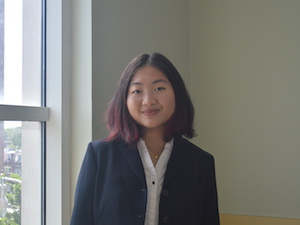 Estelle Yeung | Baltimore Harm Reduction Coalition
Estelle Yeung | Baltimore Harm Reduction Coalition
This week, I’ve been thinking about how systematic barriers continue to impact Baltimore Harm Reduction Coalition’s participants and people targeted by the war on drugs. What is causing this to happen, and how did people who use drugs in Baltimore come to rely on a relatively small nonprofit for lifesaving naloxone, food, and safer use supplies?
One thing BHRC advocates for is decriminalizing drug paraphernalia. The criminalization of the supply-side drug market disproportionately impacts people of color and results in people being forced to obtain drugs from illicit sources. This can lead to ingestion of drugs laced with other substances, including fentanyl, which is much more potent and can quickly lead to overdose. An increase in infectious disease transmission, such as HIV and Hepatitis C, has been linked to injection drug use. However, injection-related harm is preventable; injection drug use is not necessarily a vector for bloodborne infection. Criminalizing drug paraphernalia limits the availability of sterile paraphernalia, like syringes. This forces people who use drugs to share and reuse paraphernalia, which is a risk factor for bloodborne transmission. This is why syringe service programs (SSPs) such as BHRC have been proven to be effective ways to reduce harm. By providing sterile injection equipment for free, SSPs reduce the need to share paraphernalia, reducing rates of HIV and Hep C transmission among people who use drugs.
BHRC ramped up their outreach services during the pandemic and now conduct outreach at four sites throughout Baltimore, as well as drop-by at the office three times a week. I’ve been surveying participants during outreach for one of my long-term projects, and a major theme I’ve noticed is that most participants hear about BHRC’s services through word of mouth, which says a lot about the importance of engaging with the communities we work with. Maintaining long-term relationships with participants and being transparent with them are important ways through which BHRC earns the trust of participants.
Many of BHRC’s participants are experiencing homelessness, which is an example of how intersectionality impacts the work of BHRC. In addition to safer use supplies, BHRC gives out snack bags, menstrual products, and hygiene kits. Many participants identify those kits as even more critical than safer use supplies. Linking this to our broader harm reduction work, it’s important to think about holistic wellbeing when conducting service work.
I’ve learned so much about harm reduction this summer, but more importantly, I’ve learned how to carry more compassion in my public health work because of the intersectionality I’ve seen in BHRC’s work. Through firsthand experiences, this summer has taught me a lot of the “why” for public health solutions I already supported, such as overdose prevention sites and decriminalizing paraphernalia.
